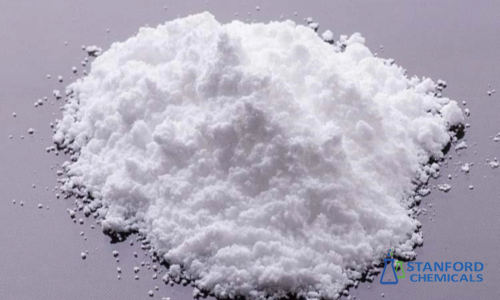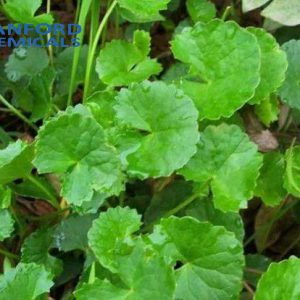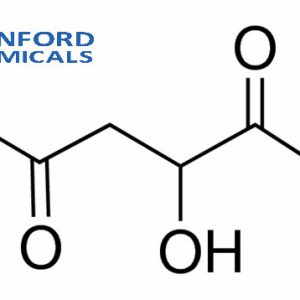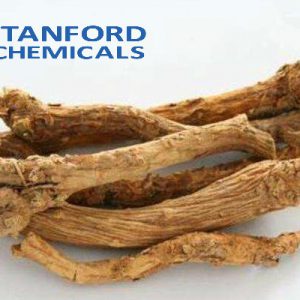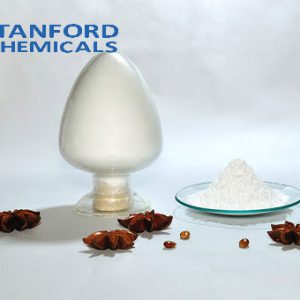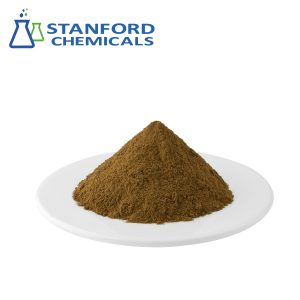- Home
- Herbal Extract
- HA6968 Glycyrrhetinic Acid Powder (CAS No. 471-53-4)
HA6968 Glycyrrhetinic Acid Powder (CAS No. 471-53-4)
| Parameter | Value |
| Material | Glycyrrhetinic Acid |
| CAS Number | 471-53-4 |
| Molecular Formula | C30H46O4 |
| Purity | ≥97% (HPLC) |
| Appearance | White Powder |
Related Products: Ammonium Iron (III) Citrate, Deglycyrrhizinated Licorice Powder (DGL), Astaxanthin Powder, Beta-carotene (10%) Powder
- Description
Description
Glycyrrhetinic Acid Powder Technical Profile Description
Glycyrrhetinic Acid (C₃₀H₄₆O₄; CAS: 471-53-4) is a high-purity triterpenoid compound obtained through the hydrolysis of glycyrrhizin from Glycyrrhiza glabra. This bioactive molecule features a unique pentacyclic oleanane structure that confers exceptional pharmacological properties.
Key Specifications
| Parameter | Specification |
| Appearance | Fine crystalline powder |
| Color | White to pale yellow |
| Odor | Odorless |
| Taste | Characteristic bitter |
| Melting Point | 297-302°C |
| Solubility | Soluble in organic solvents |
| Sparingly soluble in water | |
| Purity | ≥98% (HPLC) |
Physicochemical Properties
- Molecular Weight: 470.68 g/mol
- UV Absorption: λmax 250 nm
- IR Spectrum: Characteristic peaks at 1700 cm⁻¹ (C=O) and 3400 cm⁻¹ (O-H)
- Stability: Stable at room temperature; light-sensitive
Mechanism of Action
The compound exerts its biological effects primarily through:
- Potent inhibition of 11β-HSD enzymes (IC₅₀ = 50-100 nM)
- Modulation of glucocorticoid receptor activity
- Antioxidant and anti-inflammatory properties
Industrial Applications
- Pharmaceutical Development
| Application | Concentration | Benefit |
| Anti-inflammatory | 5-20 mg/dose | Targets rheumatoid arthritis |
| Hepatoprotective | 10-50 mg/dose | Reduces chemotherapy toxicity |
| Oncology | Nanoformulated | Enhances drug delivery |
- Cosmetic Formulations
| Product Type | Function | Effective Range |
| Anti-aging serums | UV protection & collagen boost | 0.1-0.5% |
| Acne treatments | Antibacterial action | 0.5-2% |
| Brightening creams | Tyrosinase inhibition | 0.2-1% |
- Advanced Research
- Reference standard for analytical methods
- Radiation protection studies
- Transdermal delivery systems development
Quality Assurance
- Purity Testing: HPLC, GC-MS
- Contaminant Screening: Heavy metals, residual solvents
- Certifications: ISO 9001, GMP compliant
Glycyrrhetinic Acid Powder Packaging
Our products are packaged in customized cartons of various sizes based on the material dimensions. Small items are securely packed in PP boxes, while larger items are placed in custom wooden crates. We ensure strict adherence to packaging customization and the use of appropriate cushioning materials to provide optimal protection during transportation.
Glycyrrhetinic Acid Powder FAQs
Q1. What is glycyrrhetinic acid?
Glycyrrhetinic acid is a bioactive triterpenoid compound derived from licorice root (Glycyrrhiza glabra), formed by the hydrolysis of glycyrrhizin. It exists as a pale-yellow to white crystalline powder and serves as the core aglycone responsible for licorice’s pharmacological effects.
Q2. What are its key properties?
This compound exhibits potent anti-inflammatory, antiviral (notably against herpesviruses), and hepatoprotective activities. It achieves these effects primarily by inhibiting 11β-hydroxysteroid dehydrogenase (11β-HSD), modulating cortisol metabolism. Unlike corticosteroids, it lacks immunosuppressive side effects at therapeutic doses.
Q3. What are its main applications?
Glycyrrhetinic acid is widely used in dermatology for treating eczema, psoriasis, and acne due to its ability to reduce inflammation and promote skin repair. It’s also formulated in oral care products for gingivitis, studied for liver protection against toxins, and applied in antiviral therapies targeting hepatitis and herpes simplex viruses.

